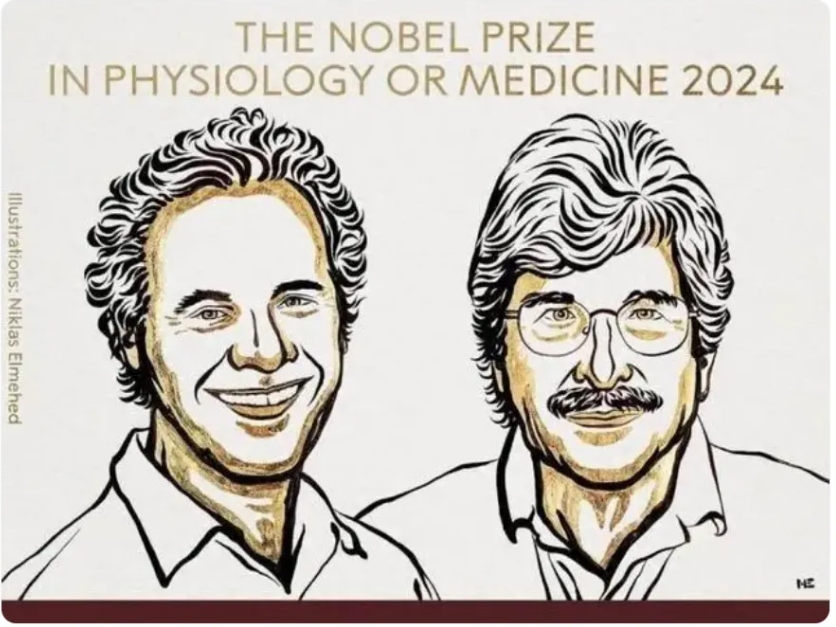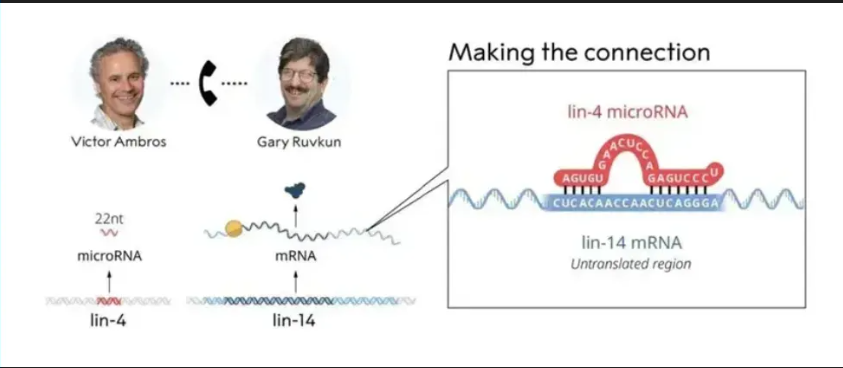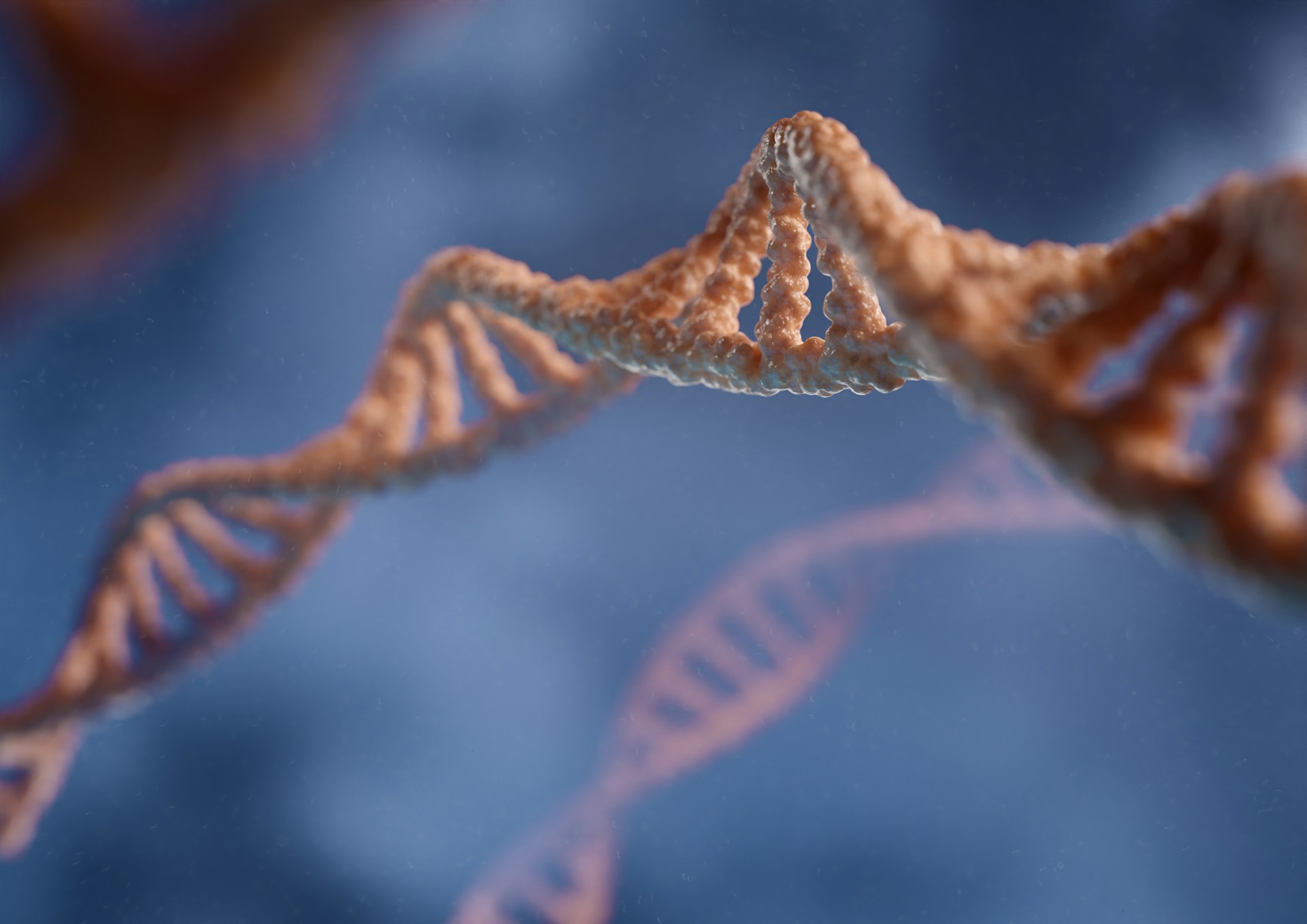In 1993, Ambros and Ruvkun respectively published papers to explain this amazing control process. They found that the lin-4 RNA is like a key that can perfectly match certain parts of the messenger RNA (i.e., mRNA, note that its abbreviation is easily confused with microRNA) produced by the lin-14 gene. Once this "key" is inserted into the "keyhole", it will prevent lin-14 from producing proteins.
It was not until 2000 that Ruvkun's laboratory discovered the second microRNA named let-7. To the excitement of scientists, let-7 was not only found in nematodes but also in humans and other animals.
MicroRNA is an RNA molecule that is widely present in eukaryotes and is approximately 21 to 23 nucleotides long. They usually originate from some RNAs (non-coding RNAs) that are transcribed from DNA but cannot be further translated into proteins. MicroRNA inhibits post-transcriptional gene expression by specifically binding to target messenger ribonucleic acid (mRNA). This inhibitory effect plays an important role in regulating gene expression, cell cycle, and the developmental timing of organisms.
Scientists have discovered that abnormalities in microRNA are associated with various diseases, including cancer, heart disease, and neurological disorders. This provides new ideas for the diagnosis and treatment of diseases. In terms of diagnosis, certain microRNAs can serve as biomarkers for diseases.
For example, by detecting the levels of certain microRNAs in the blood, doctors may be able to detect certain cancers earlier in the future. This non-invasive detection method is expected to revolutionize the early diagnosis of diseases. Currently, the main methods for studying microRNA are real-time PCR, biochip technology, and high-throughput sequencing technology.
The traditional TRIzol and other commonly used RNA extraction kits extract larger RNA molecules, including rRNA and mRNA, but the extraction effect on microRNA is significantly poor.
Neohalo Bioscience synthesizes silicon-magnetic polymers with special structures through patented technology to adsorb microRNA, and utilizes the reversible magnetic response physical properties of the silicon-magnetic polymers to enrich and clean the impurities and salts that are non-specifically bound. The purified microRNA is separated from the silicon-magnetic polymers using an eluent to obtain microRNA that meets the requirements of downstream detection. Paired with the microRNA library construction kit developed by Xinhui Biology based on the patented technology for removing adapter self-ligation products, library samples suitable for MGI or Illumina sequencing platforms can finally be prepared.
MicroRNA plays an important role in the biotechnology industry. Using microRNA, various drugs and vaccines can be developed, such as drugs for treating various types of hepatitis and various cancers. In terms of crops, microRNA also has great production potential. It can be applied as a potential target in genetic breeding and production for improving crop traits and resistance to adverse conditions.




